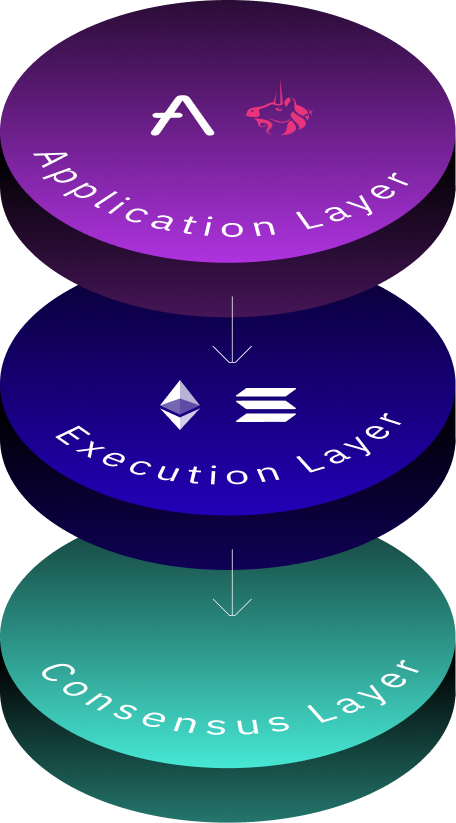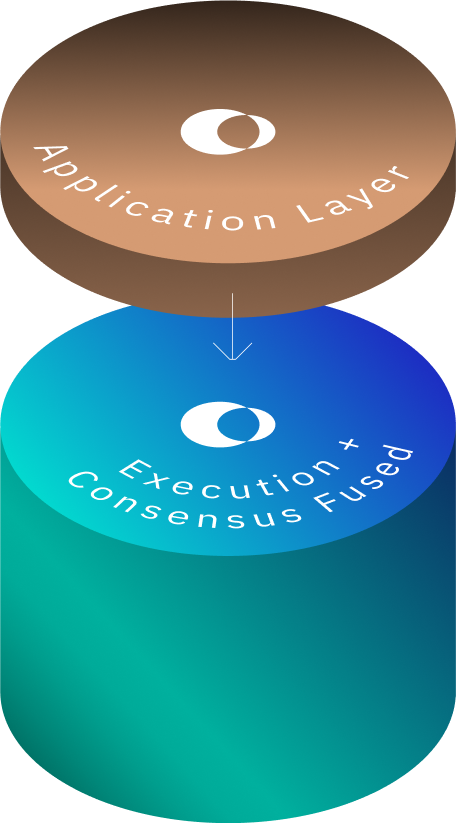Consensus as a Product Primitive
Objective
Turn consensus from a base-layer constraint into a composable primitive. Any logic.
Audience
Protocol devs, consensus
engineers, and teams building
participant-owned apps designed to scale like the internet.
Main Focus
How do you define and verify trust on your terms, and reward users for keeping it alive?
Proof of Work and proof of
Stake. Still Just Proof You’re
Waiting in Line.
Global consensus queues are congested by design.
Most chains rely on rigid, shared consensus so you compete for blockspace, inheriting validator sets you didn’t choose. You wait, you pay gas, and you accept the assumptions of someone else’s network.
Bitcoin burns electricity.
Ethereum sells blockspace to the highest bidder.
You pay either way, and still wait.
With Reality, consensus is local and asynchronous. No more queues, no more waiting.
What if you could define your own trust model, and reward users for keeping it alive? Consensus shouldn’t be something you inherit, it should be something you program.
Consensus, You Design It.
On most chains, consensus happens around your app, not for it.
You share blockspace with unrelated apps, you rely on validators you don’t know,
and you follow trust models that weren’t designed for your app
Reality flips that.
- Your rApp defines the rules.
- Your community runs the logic.
- Your users become the trust layer.
If you need…
High security (Byzantine fault tolerance,
audits, long-term trust)
Ultra-low latency
(real-time games, chat, trading)
Scalability
(millions of lightweight events, IoT, social)
Custom trust (community-driven logic,
domain-specific checks)
Reality lets you…
Pick the fault-tolerance level and
verification rules for your rApp.
Configure consensus for speed — sub-second
finality when you need it.
Spread consensus across many lightweight
nodes without bottlenecks.
Embed your own rules: who validates,
what counts as valid, how disputes resolve.
No global bottlenecks, no validator games, and no blockspace tax.
A new primitive for the internet:
logic, community, and consensus in one.
Consensus Built Around You
Most consensus systems force apps to inherit global rules designed for everyone. With 2MEME, consensus becomes programmable, adaptive, and tailored to your app’s logic, here’s how it compares to legacy models:
Legacy Chains
All apps inherit the same rules
App must conform to global consensus
Congestion, latency, gas wars
Central clock, forced order
RealityNet (2MEME)
Each rApp defines its own logic
Consensus conforms to your rApp
Horizontal execution without queueing
Local, rApp-defined timelines
2MEME isn’t just a new consensus algorithm. It’s consensus as a system you control.
Consensus Inside the Compute Layer
Legacy blockchains keep them separate — code runs first, consensus checks later. Reality verifies every computation as it happens.
On other chains your code executes on centralized machines and only gets verified afterward. That’s slow, costly, and open to manipulation. With Reality’s 2MEME, computation and verification are one continuous process. Each task is proven while it runs, and contributors are paid for actual work — not for locking tokens or idling in uptime mode.
What This Unlocks:
- Every computation becomes provable
- Trust has a unit of measure
- Tokens become execution fuel
- Your app becomes a micro-economy
This isn’t just “who agrees.”
It’s “who did the work and can prove it?”
What if you could define your own trust model, and reward users for keeping it alive? Consensus shouldn’t be something you inherit, it should be something you program.
Proofs Generated as Code Runs
Ethereum & Solana
L2 Rollups
L2s process transactions off-chain to reduce congestion but must settle on L1, adding delays and costs
Rollups depend on L1 for security and finality, meaning transactions are never truly independent.

User-facing apps submit transactions, but execution and finality happen in deeper layers
Ethereum’s EVM and Solana’s Sealevel process execution independently, but finality is handled separately.
Since execution runs in isolation, validators must confirm state changes before they become final.
PoW or PoS ensures security and ordering but don’t execute logic. Finality occurs here, but only after execution has been processed separately.
Separate execution model depends on L2s to scale, adding complexity, rollup costs, and liquidity fragmentation
RealityNet

“rApps execute natively across chains—autonomous, and built for a fully decentralized Internet.
Execution and consensus are no longer separate—transactions, AI, and swaps finalize the moment they are processed.

Separate execution model depends on L2s to scale, adding complexity, rollup costs, and liquidity fragmentation
Ethereum & Solana

Separate execution model depends on L2s to scale, adding complexity, rollup costs, and liquidity fragmentation
RealityNet

Separate execution model depends on L2s to scale, adding complexity, rollup costs, and liquidity fragmentation


A Truth Machine for the Internet of Value
Assets and logic move fast, trust shouldn’t lag behind.
Mixed trust modes
Blend BFT, PoUW, ZK proofs, and even game-theoretic models in a single rApp.
Cross-environment consensus
Have the same consensus session span mobile devices, edge nodes, and cloud servers without a central coordinator.
Parallel trust lanes
Run multiple, isolated consensus processes for different parts of your rApp simultaneously.
Consensus as an API
Expose your rApp’s consensus as a service for other apps to use and extend.
Compute-verified in place
Run and verify code in the same execution flow — no “execute now, settle later” delays.
Micro-scope consensus
Scope consensus to just one rApp, one service, or even a single function call.
Each rApp operates like its own blockchain with consensus you define.
Reality lets you deploy not just code, but the consensus, economy, and infrastructure behind it. Each rApp becomes its own sovereign system, with programmable trust and execution logic baked in from day one.